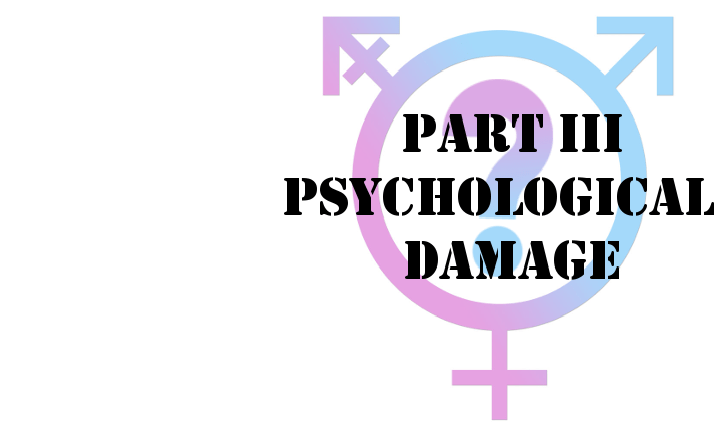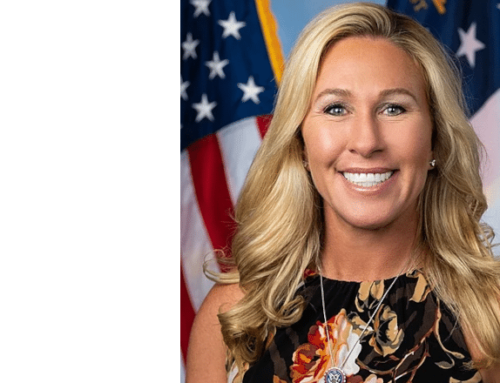This is the last installment of our three-part series on this subject.
- When no intervention is made 70% of children with gender dysphoria will grow out of it on their own.
- The Diagnostic and Statistical Manual of Mental Disorders (DSM-5) lists eight conditions that are associated with gender dysphoria in children. A child is diagnosed with this condition if they meet six of them. They are:
–A strong desire to be of the other gender or insistence that one is the other gender
–A strong preference for cross-dressing or simulating [other gender] attire
–A strong preference for the toys, games, or activities stereotypically used or engaged in by the other gender
–A strong preference for playmates of the other gender
–A strong rejection of toys, games and activities typically associated with birth sex
–A strong dislike of one’s sexual anatomy
–A strong desire for the primary and/or secondary sex characteristics that match one’s experienced gender
- Most of the adolescent girls claiming to be transgender did not show any signs of these conditions in childhood. Further, social media can influence and coach these girls to say they meet the DSM-5 criteria for gender dysphoria and begin their treatment.
- The BBC reported on a study that showed some children taking puberty blockers reported an increase in thoughts of suicide and self-harm.'”
- “It showed that after a year on puberty blockers, there was a significant increase found in those answering the statement ‘I deliberately try to hurt or kill myself.'”
- A study published in the American Journal of Preventive Medicine “found that 80 percent of gender minority students report having mental health problems, nearly double the rate of ‘cisgender’ students.”
- Renowned psychiatrist, Paul McHugh, said, “I believe that these gender confusions are mostly being driven by psychological and psychosocial problems these people have.”
- Professor Lisa Littman, a researcher at Brown University published a report “suggesting that some transgender-identified children might suffer from ‘rapid onset gender dysphoria,’ a phenomenon in which ‘one, multiple, or even all of the friends [in a group] have become gender dysphoric and transgender-identified during the same timeframe.” She believes that transgender identity is a social contagion. Littman hypothesized three things worked as the contagion:
–The belief that non-specific symptoms should be perceived as gender dysphoria and that their presence is proof of being transgender
–The belief that the only path to happiness is transition
–The belief that anyone who disagrees with the self-assessment of being transgender or opposes the plan for transition is transphobic, abusive, and should be cut off
- According to Littman’s study:
–Over 80% of the adolescents were natal females, with a mean age of 16.4.
–Most were living at home with their parents when they announced they were transgender.
–The vast majority had zero indicators of childhood gender dysphoria, and universally they failed to meet six of the criteria the DSM-5 requires to diagnose a child with gender dysphoria.
–A majority had had one or more psychiatric diagnosis and almost half were engaging in self-harm prior to the onset of gender dysphoria.
–41% had expressed non-heterosexual sexual orientation before identifying as transgender.
–47.4% had been formally assessed as academically gifted.
–Nearly 70% of the teenagers belonged to a social group in which at least one friend came out as transgender, and in some groups the majority of the friends had come out as transgender.
–Over 65% of teens had increased their social media use and time spent online immediately prior to the announcement of transgender identity.
–Among parents who knew their children’s social status, over 60% said the announcement brought a popularity boost.
–Over 90% of parents surveyed were white.
–Over 70% of parents surveyed had earned bachelor’s or graduate degrees.
–Over 85% of parents reported supporting the rights of gay couples to marry.
–Over 88% of parents surveyed reported being supportive of transgender rights.
–Nearly 64% of parents had been called “transphobic” or “bigoted” by their children for such reasons as: disagreeing with the child about the child’s self-assessment as being transgender, recommending that the child should take more time to figure out if the child’s feelings of gender dysphoria persisted, calling the child the wrong pronouns, telling their child that hormones or surgeries were unlikely to help, calling their child by his or her birth name, or recommending that the child work on other underlying mental health issues before undergoing medical transition.
–Fewer than 13% of parents believed that their adolescents’ mental health had improved after transgender identification, and over 47% reported that their mental health worsened.
- A study published by the American Academy of Pediatrics found that “More than half of transgender male teens [girl to boy] who participated in the survey reported attempting suicide in their lifetime, while 29.9 percent of transgender female teens [boy to girl] said they attempted suicide. Among non-binary youth [those who identify as neither], 41.8 percent of respondents stated that they had attempted suicide at some point in their lives.”
- In a paper published by the American Journal of Psychiatry it was reported that “sex-reassignment procedures—both hormonal and surgical—do not bring the promised mental health benefits.”
- The authors point out that on one score—treatment for anxiety disorders—patients who had sex-reassignment surgeries did worse than those who did not. “Individuals diagnosed with gender incongruence who had received gender-affirming surgery were more likely to be treated for anxiety disorders compared with individuals diagnosed with gender incongruence who had not received gender-affirming surgery.”
- The study in the American Journal of Psychiatry also found that transgender individuals who had received a diagnosis of gender incongruence were:
–six times more likely to have a mood or anxiety disorder than the general population
–three times as likely to be prescribed antidepressants and anti-anxiety medications
–more than six times as likely to attempt suicide resulting in hospitalization
- Therapists usually practice gender affirmation. In other words, if a girl thinks she is a boy, therapists believe it is in the best interest of the child to affirm this. There is little evidence to suggest that this approach actually resolves the issues of gender dysphoria. Further, this approach is usually adopted without parental consent.
- Gender therapists tend to believe that adolescents know who they are. Rather than working to resolve underlying conditions that may cause gender dysphoria, they take the minor’s word as fact, and begin a treatment regiment based on what the adolescent believes.
- Gender therapists will essentially hold parents emotionally hostage by informing them that if they do not embrace their adolescents’ beliefs about gender dysphoria then their children will kill themselves. Rather than actively working to end self-harming behavior, therapists will use it to push the adolescents further down the path to transitioning.
- Gender therapists generally believe that gender identity is immutable and there is no way to convert a child out of a transgender identity. So instead of helping children move past their gender dysphoria, as they would 70% of the time without intervention, therapists believe there is no alternative to embracing the identity and moving forward with transition procedures.
- Many have described the transgender community, particularly its online presence, as a cult. They will constantly push one another further down the path of transition in the pursuit of a more genuine and authentic transgender lifestyle. Frequently, in social media postings, transgender influencers praise one another for how hardcore they are as they mutilate their bodies. Anyone perceived to have reservations about taking the plunge risks being perceived as less committed to the lifestyle, and not fully onboard.
- A 2020 study conducted by Britain’s National Health Service found a relationship between increased media coverage of transgender issues and rising number of teenagers, primarily girls, requesting sex changes. Journalists glorify medical transitions and present them to adolescent readers of celebrity publications as a solution to depression, anxiety and panic attacks. This is very appealing to adolescent girls, who traditionally have higher degrees of depression and anxiety than their male counterparts and were more adversely impacted by social isolation during the lockdown.
- During the isolation of lockdown, anxiety and depression grew in many girls. Last year, they followed an increasingly familiar pattern of rapid-onset-gender-dysphoria. It typically starts by transgender activists on Reddit, Tumblr, and YouTube promoting a transgender identity as a cure to all their problems. This then leads to the girls forming a new gender identity which schools then eagerly affirm. Any objections are treated as “transphobic.”
For a glossary of terms, click here.







